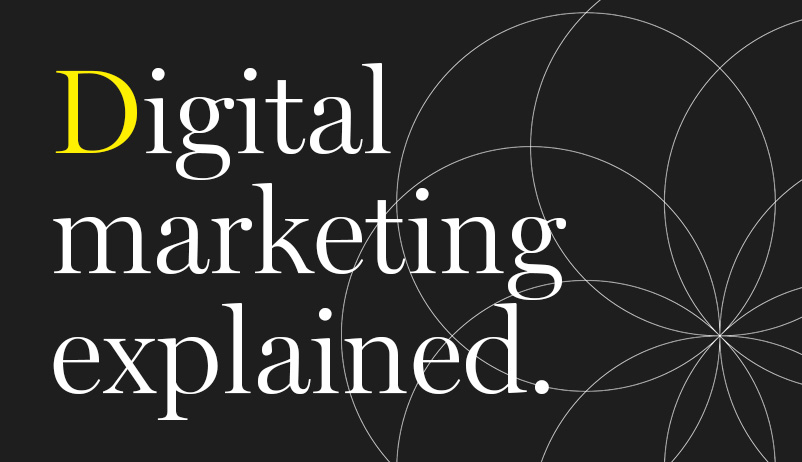
Lorem ipsum dolor sit amet, consectetur adipiscing elit. Suspendisse varius enim in eros elementum tristique. Duis cursus, mi quis viverra ornare, eros dolor interdum nulla, ut commodo diam libero vitae erat. Aenean faucibus nibh et justo cursus id rutrum lorem imperdiet. Nunc ut sem vitae risus tristique posuere.
Introduction — Why AI in Marketing Matters
Artificial intelligence (AI) has rapidly progressed from a peripheral capability to a central pillar of modern marketing. As customers engage across more channels and expect increasingly personalised, frictionless experiences, traditional tools and manual processes struggle to keep pace. AI offers a solution: it can analyse large volumes of data, identify patterns invisible to human teams, and automate execution at scale. The result is a marketing function that is more adaptive, predictive, and commercially effective.
The shift is driven by two powerful forces. First, digital interactions now generate unprecedented quantities of behavioural data across devices, platforms, and channels. Second, AI models — including machine learning and generative AI — have become accessible to non-technical teams, enabling marketers to create content, segment audiences, and optimise campaigns without specialist engineering support. These capabilities are accelerating performance improvement, helping organisations deploy resources more efficiently and respond to market dynamics in real time.
Crucially, AI is not replacing marketing expertise; rather, it is reshaping how marketers work. Repetitive and operational tasks can be automated, freeing teams to focus on strategy, creativity, and customer relationships. AI augments decision-making by surfacing insights earlier and reducing reliance on intuition. It enables teams to test hypotheses rapidly, refine messaging with precision, and continuously improve performance.
For business leaders, the strategic importance of AI lies in its commercial impact: higher conversion, lower acquisition costs, improved customer lifetime value, and faster growth. As competitive intensity increases and marketing budgets face pressure, AI offers a path to scale efficiently and build stronger customer connections. Organisations that invest early — in capability, governance, and talent — will be better positioned to unlock both short-term gains and long-term advantage.

What Is AI in Marketing?
AI in marketing refers to the application of artificial intelligence technologies — including machine learning, natural language processing, predictive modelling, and generative AI — to enhance the way organisations attract, engage, convert, and retain customers. Rather than replacing traditional strategy, AI strengthens marketing by augmenting human capability: it analyses large datasets more efficiently, learns from patterns in behaviour, and executes actions faster and with greater precision.
At its core, AI in marketing performs three interrelated functions. First, it interprets data at scale. AI models can process structured and unstructured information from multiple sources — such as web sessions, email interactions, CRM records, social content, and purchase history — revealing insights that would be difficult or time-consuming for human teams to identify. Second, AI predicts future behaviour. Models can forecast propensity to buy, likelihood of churn, and segment-level preferences, enabling targeted engagement and personalised experiences. Third, AI acts autonomously or semi-autonomously to optimise marketing execution — for example, adjusting campaign bidding, generating content variations, or orchestrating tailored customer journeys.
AI ranges from embedded capabilities within marketing platforms to advanced, bespoke models deployed by data science teams. In recent years, generative AI has brought an additional creative dimension: tools can now create copy, imagery, segmentation strategies, and campaign variations at speed. Used responsibly, this can dramatically accelerate production and allow teams to test more hypotheses with fewer constraints.
Ultimately, AI in marketing exists to improve effectiveness and efficiency. It enables organisations to deliver more relevant experiences, make higher-quality decisions, and create personalised, scalable interactions across the customer lifecycle — driving stronger commercial outcomes with reduced latency and operational effort.

"AI in marketing powers efficiency and creativity. Marketers should positively embrace the advantages AI brings, yet be cautious of its limitations. It truly is an exciting new era!"
Paul Mills - Chartered Fractional CMO & Founder, VCMO
Why AI Is Transforming Marketing
AI is reshaping marketing because it enables organisations to compete on speed, precision, and personal relevance at a scale that traditional approaches cannot achieve. As customer journeys become more complex and expectations rise, the ability to understand behaviour in real time — and respond with tailored experiences — has become a differentiating capability. AI provides the computational power and insight required to navigate this environment effectively.
Historically, marketing decision-making has relied on retrospective analytics, intuition, or periodic research cycles. These methods are slow, fragmented, and increasingly inadequate. AI introduces a more dynamic paradigm. Machine learning models process large, multi-source datasets continuously, identifying emerging patterns and predicting customer needs earlier. This predictive capability improves strategic planning, optimises budget allocation, and helps organisations engage customers before competitors do — often with materially better conversion outcomes.
AI also transforms marketing execution. Tasks that once required manual intervention — such as creating campaign assets, selecting audiences, testing variants, or adjusting bid strategies — can now be automated. Generative AI and natural language models significantly compress content creation cycles, allowing teams to produce and refine copy, imagery, or audience messaging at scale. In parallel, automation tools orchestrate personalised journeys and ensure communications are delivered at the optimal moment, channel, and frequency.
These efficiencies allow marketers to focus on higher-value priorities: proposition development, customer insight, experimentation, and creative strategy. Meanwhile, budget-constrained organisations can reallocate resources from operational tasks to growth initiatives, improving both productivity and financial performance.
Finally, AI promotes more equitable decision-making. Algorithmic insight reduces dependence on hierarchical decision structures, enabling teams to test hypotheses rapidly and act on evidence rather than opinion. Collectively, these benefits explain why AI is not simply an incremental enhancement but a structural shift that is redefining modern marketing.
Core Applications of AI in Marketing
AI enables marketers to automate routine tasks, generate deeper insight and personalise experiences at scale. While adoption varies by maturity, most organisations apply AI across several foundational use cases that enhance decision-making, reduce operational effort and improve customer outcomes. The following applications illustrate where AI drives the greatest commercial value today.
- Data Analysis & Insight - AI models analyse large volumes of structured and unstructured data — such as behavioural logs, CRM activity, website interactions and call transcripts — to uncover trends, correlations and emerging patterns. This enables marketers to understand what customers value, where friction occurs and which segments are most likely to convert or churn, informing more precise decision-making.
- Audience Segmentation - Machine learning automatically groups customers based on behavioural signals rather than simple demographic assumptions. Dynamic segmentation identifies high-value clusters, enabling more targeted engagement, higher conversion and more efficient budget allocation across acquisition and retention channels.
- Predictive Analytics - Predictive models forecast future outcomes — such as propensity to buy, lifetime value, or churn likelihood — helping teams intervene early or prioritise the most commercially promising opportunities. This improves campaign performance, sales alignment and resource planning.
- Content Generation & Personalisation - Generative AI accelerates creation of written, visual and multimedia assets, while recommendation engines tailor messaging and offers to individual users. This drives more relevant, timely and engaging experiences across email, web, paid, and owned platforms.
- Search & SEO - AI supports keyword modelling, intent classification, content optimisation and structured data generation. It helps identify emerging topics, improve search relevance and enhance on-page experience to increase ranking performance and organic visibility.
- Programmatic / Targeted Advertising - Algorithms optimise bidding, placement and creative selection in real time to ensure ads are shown to the most relevant audiences. This reduces wasted spend and increases return on ad investment through more accurate targeting and message alignment.
- Workflow Automation - AI orchestrates repetitive tasks — such as lead scoring, email sequencing, campaign routing and performance reporting — enabling teams to focus on strategy and insight rather than operational execution.
- Customer Service Assistants - AI-powered chatbots and virtual agents handle inbound requests, troubleshoot basic issues and surface recommendations. This improves service responsiveness while enabling human teams to focus on higher-value interactions.

Benefits of AI in Marketing
AI is increasingly embedded within marketing strategies because it strengthens decision-making, improves operational efficiency, and enhances customer experience. When deployed responsibly, it enables organisations to run more targeted, responsive and commercially effective programmes. The following benefits illustrate why AI has become a strategic priority for both scaling businesses and mature enterprises.
1) Increased Productivity
AI automates time-intensive tasks such as reporting, campaign routing, content drafting, and segmentation. This frees marketing teams to focus on strategic activities — from proposition development to partnership building — rather than operational execution. Productivity gains can be substantial, allowing lean teams to deliver enterprise-level throughput.
2) Improved Decision-Making
AI models analyse behavioural and transactional data at a volume and speed unattainable for humans. They uncover patterns that guide stronger decisions on channel mix, messaging, product focus, and resource allocation. This reduces reliance on intuition and helps leaders make more confident, evidence-based choices.
3) Higher ROI and Efficiency
AI enables more accurate targeting, smarter bid optimisation and improved messaging relevance. This reduces media waste, increases conversion and ultimately improves return on investment across acquisition and retention channels. By prioritising the most valuable customers, AI supports more efficient budget deployment.
4) Personalised Customer Experiences
Recommendation engines and dynamic personalisation tailor content, timing and offers to individual preferences. This creates more relevant journeys that increase engagement, satisfaction and loyalty — key drivers of lifetime value and repeat purchase.
5) Faster Time to Market
Generative AI accelerates the production of assets — from copy and imagery to segmentation and campaign variants — reducing development cycles. Teams test more hypotheses and iterate faster, driving rapid performance improvement.
6) Stronger Customer Relationships
AI-enabled service tools such as chatbots and virtual agents provide immediate support and tailored recommendations. This increases responsiveness and consistency, strengthening trust and long-term relationships.
How to Incorporate AI into a Marketing Strategy (Step-by-Step)
AI delivers the greatest value when introduced deliberately rather than as a technology-led experiment. A structured approach ensures alignment with business objectives, responsible governance and scalable adoption. The following steps provide a practical framework for embedding AI capability within a modern marketing organisation.
- Establish Clear Goals - Define what success looks like before selecting tools or models. Goals may include reducing acquisition costs, improving conversion rates, increasing retention, or accelerating content production. Clear objectives enable teams to prioritise initiatives, select appropriate data sources and measure outcomes effectively.
- Acquire or Develop the Right Talent - AI requires a blend of capabilities — including data literacy, analytical competence, strategic marketing knowledge and basic statistical understanding. Organisations may need to upskill existing teams, recruit AI-savvy talent or work with external partners to ensure skills match ambition.
- Ensure Data Governance & Privacy Compliance - AI performance depends on data quality and regulatory adherence. Organisations must establish robust governance frameworks covering collection, storage, consent, usage rights and anonymisation. Compliance with GDPR and other regulations is essential to protect customer trust and avoid legal exposure.
- Assess and Improve Data Quality - Reliable AI outputs depend on the integrity, completeness and consistency of input data. Teams should audit data sources, remove duplication, standardise formats and ensure labelling accuracy. Poor data quality introduces bias and leads to unreliable predictions.
- Select the Right AI Solutions - Evaluate tools based on integration capability, transparency, data security, usability and scalability. Solutions may include embedded platform functionality (e.g., CRM), marketing-specific AI tools, or bespoke models developed with technical teams.
- Integrate and Deploy AI Across Workflows - Embed AI within existing systems and operational processes — such as campaign activation, personalisation, analytics and service delivery. Integration ensures that insights feed directly into execution without creating additional manual effort.
- Monitor, Measure and Improve - AI models require ongoing performance evaluation. Teams should track accuracy, commercial impact and user experience outcomes, refining models and updating data inputs as conditions evolve. Continuous optimisation enables compounding value over time.

Selecting an AI Marketing Platform
Choosing the right AI marketing platform is a strategic decision with long-term implications for capability, cost, data governance and competitive advantage. The ideal solution should enhance existing workflows, integrate cleanly with your technology stack, and provide the level of transparency required to make confident decisions. In practice, most organisations begin with embedded AI functionality within CRM, advertising and analytics tools before expanding to specialised or bespoke solutions. A disciplined selection process helps ensure the chosen platform aligns with business objectives and scales effectively as needs evolve.
Successful evaluation begins with a clear understanding of the marketing challenges AI is expected to solve: greater personalisation, improved targeting, faster content production, or more reliable insight. Platforms should then be assessed against several core criteria.
Key selection criteria
- Integration and Interoperability - The platform must integrate with existing data sources — CRM, analytics, CMS, advertising — to ensure a holistic view of the customer. API access and native connectors reduce implementation effort and fragmentation.
- Data Security and Governance - Robust controls are essential to protect sensitive information and maintain GDPR compliance. Leaders should validate encryption standards, access permissions, retention policies and auditability.
- Model Transparency and Explainability - AI decisions should be interpretable. Transparency enables teams to understand why a recommendation was made, identify potential bias and maintain appropriate oversight.
- Scalability and Flexibility - The solution should support increasing data volumes, more complex use cases and multi-market deployment without significant rework.
- Usability and Adoption - A strong user experience ensures marketing teams can self-serve without excessive technical support. Platforms offering guided model configuration, visual dashboards and intuitive workflows drive higher adoption.
- Support and Talent Enablement - Vendors should provide onboarding, training resources and implementation support to accelerate time-to-value and build internal capability.
When selected thoughtfully, an AI marketing platform becomes more than a tool — it becomes an operational foundation that enables systematic experimentation, deeper customer insight and scalable personalisation.
Challenges in AI Marketing
While AI offers substantial commercial advantages, implementation is not without difficulty. Success requires more than deploying a new tool; it depends on organisational readiness, data maturity, clear governance and sustained investment in skills. The following challenges illustrate where many programmes encounter friction and how these issues can compromise effectiveness if not carefully managed.
1) Data Quality and Training Time
AI models are only as strong as the data used to train them. Incomplete, inconsistent or biased data reduces accuracy, introduces skewed outcomes and limits the value of predictive insight. Many marketing teams face fragmented data architectures, with information dispersed across disconnected platforms. This slows implementation and increases the time needed to train models to acceptable performance levels.
2) Privacy, Consent and Regulatory Compliance
The use of customer data requires rigorous compliance, particularly under GDPR and similar global regimes. AI programmes must ensure responsible data stewardship, including secure storage, lawful processing, explicit consent, and clear retention controls. Weak governance risks reputational damage, regulatory sanction and loss of customer trust.
3) Securing Organisational Buy-In
AI adoption often challenges established processes and decision hierarchies. Leaders may be sceptical of automated recommendations or concerned about the impact on team roles. Securing executive and functional alignment is key. Clear communication about commercial benefits, transparency mechanisms and the continued need for human oversight helps accelerate adoption.
4) Deployment Complexity
Integrating AI into existing systems can be technically complex. Many platforms require bespoke data pipelines, configuration and workflow redesign. Poor implementation can result in duplicated effort, governance gaps or limited scale. Progressive deployment — beginning with defined use cases — helps reduce disruption.
5) Keeping Pace with Market Change
AI technology evolves rapidly. Models degrade over time as customer behaviour, competitive dynamics and product propositions shift. Maintaining performance requires continual retraining, monitoring and calibration. Organisations that treat AI as a one-off initiative risk outdated predictions and eroding value.

Pitfalls to Avoid
AI can materially enhance marketing performance, but success is not guaranteed. Many organisations encounter predictable pitfalls that limit value creation or introduce operational and ethical risk. Recognising these challenges early helps leaders design programmes that are robust, transparent and commercially grounded. The following pitfalls highlight where AI initiatives most commonly underperform — and where disciplined governance is required.
- Legacy Models and Weak Data Foundations - Relying on outdated technology or poorly maintained datasets leads to inaccurate predictions and untrustworthy recommendations. Without structured data governance, AI reinforces historical bias and amplifies errors rather than correcting them.
- Lack of Transparency and Interpretability - Opaque “black box” models make it difficult to understand why decisions are being made. This undermines stakeholder trust, complicates compliance, and limits the ability to challenge or refine outputs. Explainability is essential for responsible deployment.
- Ethical Concerns and Model Bias - AI systems can unintentionally discriminate if trained on biased data. Poorly controlled models may target unfairly, exclude groups, or reinforce stereotypes. Ethical oversight — including bias testing and diverse training data — is essential.
- Over-Reliance Without Human Expertise - AI supports decision-making; it does not replace judgment. Organisations that remove human oversight risk deploying recommendations that are contextually inappropriate or commercially damaging. Marketers must remain accountable for final decisions.
- Data Privacy and Security Failures - Weak controls around consent, storage, access and retention increase regulatory and reputational risk. Mishandling personal data can trigger GDPR exposure and erode customer trust — compromising long-term value.
- Limited Access to Proprietary Data - Models are most effective when trained on rich first-party data. Organisations that rely solely on generic external datasets struggle to build competitive advantage because outputs lack differentiation.
Avoiding these pitfalls requires disciplined strategy, strong governance and a “human-in-the-loop” operating model that balances automation with expert supervision.
Best Practices
AI delivers the strongest commercial impact when managed as a strategic capability rather than a tactical add-on. Effective implementation requires disciplined governance, strong data foundations, cross-functional collaboration and continuous optimisation. The following best practices help organisations unlock sustainable value while maintaining ethical and operational integrity.
- Anchor AI to Clear Business Outcomes - AI should solve defined marketing problems rather than be deployed opportunistically. Teams should articulate specific objectives — such as lowering acquisition costs, increasing personalisation, or improving lifetime value — and ensure that success metrics are measurable, time-bound and commercially relevant. This alignment prevents fragmented experimentation and focuses investment where it matters most.
- Maintain Strong Governance and Ethics - Robust governance frameworks underpin safe and responsible use. Clear policies around consent, model monitoring, auditability and fairness help minimise risk. Ethical oversight — including bias testing and scenario modelling — ensures that AI-driven decisions reinforce trust rather than undermine it, particularly in regulated or high-stakes environments.
- Keep Humans in the Loop - AI augments rather than replaces human judgment. Combining algorithmic insight with strategic oversight ensures outputs are contextualised and commercially appropriate. Cross-functional review — involving marketing, data, commercial and legal stakeholders — helps teams identify risks, challenge assumptions and select the most strategic actions.
- Start Small and Scale Gradually - Pilot initiatives allow organisations to develop capability before scaling. Starting with constrained use cases — such as lead scoring, email personalisation or content generation — helps validate value and refine operating models. Successful pilots can then be expanded into more complex workflows.
- Commit to Continuous Monitoring and Optimisation - AI models are sensitive to change; as behaviour, market conditions and proposition evolve, performance can degrade. Continuous evaluation — supported by retraining cycles, data quality checks and version control — ensures outputs remain reliable. Learning should be captured centrally to inform future development and accelerate institutional knowledge.
AI in Marketing: Examples
AI is already embedded in many high-performing marketing organisations. Its value is most apparent where large datasets, complex journeys or rapid experimentation cycles make manual optimisation impractical. The following examples demonstrate how AI enhances decision-making, improves customer experience and drives meaningful commercial outcomes across the marketing lifecycle.
Example 1: Predictive Churn Modelling in Financial Services
A retail banking provider sought to improve customer retention by identifying individuals most likely to close their accounts. Machine learning models analysed behavioural signals — including product usage, service interactions and transaction patterns — to assign churn likelihood scores. High-risk customers were automatically prioritised for proactive outreach and personalised offers. The initiative reduced churn among identified cohorts and improved lifetime value, demonstrating how AI-driven prediction supports targeted retention at scale.
Example 2: Personalised Website Experiences for an eCommerce Retailer
An online retailer used AI recommendation engines to personalise on-site product discovery. Models evaluated browsing history, previous purchases and contextual signals to surface relevant items dynamically. Different variants were presented in real time based on user intent, increasing both engagement and conversion rate. Customers experienced shorter discovery journeys and stronger match-quality, lifting average order value and reducing abandonment. This illustrates how AI supports relevance at the individual level without requiring manual rule-setting.
Example 3: Generative AI for Scalable Content Production in B2B SaaS
A B2B software business used generative AI to accelerate campaign development, creating messaging variations, email sequences and landing page drafts aligned to different sectors and personas. Marketers refined AI outputs to ensure brand consistency before deploying structured A/B tests. This approach compressed production timelines from weeks to days, enabling faster iteration, deeper personalisation, and more robust experimentation while maintaining strategic oversight.
AI vs Traditional Marketing Analytics
Traditional marketing analytics has long supported strategic decision-making — from campaign reporting to attribution modelling. However, its retrospective nature limits its ability to anticipate behaviour or personalise at scale. AI introduces a more dynamic, predictive paradigm. Rather than simply describing what has happened, it forecasts what is likely to occur and automates actions accordingly. The comparison below highlights how these approaches differ and why many organisations now combine both for more responsive and commercially effective marketing.
Comparison Table — AI vs Traditional Marketing Analytics
While AI expands analytical capability, traditional analytics remains valuable — particularly for high-level reporting, compliance use cases and executive narrative. The most effective organisations use both: traditional analytics to monitor performance and shape narrative, and AI to drive high-resolution action, real-time optimisation and personalised activation.
Ethics & Governance
As AI becomes more deeply embedded within marketing workflows, ethical and governance considerations have moved from peripheral discussion to strategic priority. While AI can improve efficiency, personalisation and performance, its use raises important questions about fairness, transparency, accountability and customer consent. Organisations that deploy AI without robust governance risk regulatory exposure, reputational harm and erosion of customer trust. Responsible leadership therefore requires a structured approach to oversight, clear operating principles and ongoing monitoring.
Fairness and Bias
AI systems learn from historical data. If that data reflects patterns of inequality, models can inadvertently amplify or perpetuate bias. This has practical implications for marketing targeting, pricing decisions and audience exclusion. Ensuring fairness requires proactive bias testing, diverse training data and mechanisms that allow human review of automated decisions. Marketers must ensure that targeting strategies remain consistent with ethical expectations and do not discriminate against protected groups.
Transparency and Explainability
Transparency underpins trust. Stakeholders must understand how AI-driven decisions are made and be able to challenge or override outputs when required. Explainability is especially important in high-stakes environments where automated decisions influence pricing, access to services or relationship continuity. Clear documentation, model audit trails and plain-language communication help ensure that recommendations can be interpreted, validated and improved over time.
Privacy, Consent and Regulation
AI marketing models rely on rich data — often at granular, behavioural level. Organisations must therefore comply with GDPR and other regulatory frameworks governing consent, retention, portability and the right to be forgotten. Privacy-by-design principles should guide system architecture, and sensitive data must be safeguarded via encryption, access controls and ongoing monitoring. Explicit consent and transparent disclosure strengthen customer relationships while reducing legal risk.
Accountability and Governance Structures
Effective oversight ensures AI is deployed responsibly. Governance frameworks should define roles, escalation routes, monitoring schedules and performance criteria. Cross-functional committees — spanning marketing, data, legal, risk and compliance — help ensure balanced decision-making. Accountability must remain with human owners; AI should inform judgement, not replace it. Regular reviews, version control, and scenario testing help maintain performance as market conditions and customer behaviour change.
.jpg)
Frequently Asked Questions
AI in marketing is evolving rapidly, and leaders often have practical questions about adoption, capability requirements and impact. The following FAQs address the most common areas of interest for CEOs, founders and senior marketing professionals evaluating AI opportunities.
Is AI replacing marketers?
No. AI enhances capability rather than substituting expertise. It automates repetitive tasks, accelerates analysis and improves personalisation, allowing marketers to focus on strategy, creativity and customer relationships. Human oversight remains essential to ensure outputs are contextually appropriate and ethically aligned.
Do I need technical or coding skills to adopt AI in marketing?
Not necessarily. Many platforms now include embedded AI that can be deployed without coding. However, data literacy, critical thinking and an understanding of statistical principles help teams interpret AI outputs effectively. More sophisticated use cases may require support from data specialists.
How is AI different from traditional automation?
Automation follows predefined rules. AI learns from data, adapting behaviour as patterns change. While automation executes tasks efficiently, AI improves decisions by predicting future outcomes and recommending — or autonomously activating — the next best action.
How does AI improve customer experience?
AI tailors journeys based on individual behaviour and preference. It can personalise content, optimise channel timing, surface recommendations and power conversational support. The result is more relevant, timely interactions that improve satisfaction, loyalty and conversion.
Is AI expensive to implement?
Costs vary. Many capabilities are already embedded in modern marketing platforms (e.g., CRM, advertising), making entry relatively low-cost. More advanced implementations may require investment in data engineering, modelling and governance — though these typically deliver strong returns when aligned to strategic goals.
How quickly can organisations expect results?
Simple use cases — such as personalisation, lead scoring or content generation — can generate benefits within weeks. More advanced programmes, particularly those requiring data transformation, may take longer. Sustained value depends on continuous monitoring and iteration.
Conclusion
AI is reshaping the marketing discipline, shifting it from periodic, intuition-based decision-making to a continuously optimising system grounded in real-time data, prediction and personalised activation. At its core, AI enhances what marketing has always sought to achieve: understanding customers more deeply, responding to their needs more effectively and allocating resources more efficiently to drive growth. What has changed is the scale, speed and precision with which this can now be done.
The value of AI lies not only in automation, but in how it improves judgement. By analysing patterns in behaviour, forecasting likely outcomes and proposing next-best actions, AI strengthens strategic decision-making and challenges the instinct-led approaches that can hinder performance. When combined with disciplined experimentation and cross-functional collaboration, AI becomes a catalyst for innovation and commercial advantage.
However, successful adoption demands thoughtful execution. Data quality, governance, transparency and ethical use are foundational. Without them, AI risks reinforcing bias, eroding trust or driving decisions that lack context. Organisations must therefore balance automation with strong human oversight, ensuring that marketing expertise remains central to interpretation and final decision-making. The most effective programmes are those in which AI augments capability rather than replaces it.
Looking ahead, the marketing organisations best positioned to win will be those that invest early — building data maturity, strengthening talent, and embedding clear governance. These teams will iterate quickly, test broadly and scale what works, creating compounding performance benefits over time. As generative AI accelerates content production and predictive systems sharpen targeting, the competitive gap between leaders and laggards will widen.
In this context, AI is no longer discretionary. It is becoming an essential component of modern marketing strategy — one that enables personalisation at scale, improves commercial outcomes, and lays the foundation for sustainable growth in an increasingly dynamic environment.
Explore VCMO's GPT Chatbots
To see how VCMO is leveraging AI, view and trial our custom GPT Chatbots.
About VCMO
VCMO is a UK-based provider of fractional marketing services, supporting B2B SMEs—ranging from funded scale-ups to mid-tier and private equity-backed businesses—through key moments of growth and transformation. Its Chartered Fractional CMOs and SOSTAC® certified planners embed strategic marketing leadership into organisations navigating product launches, new market entry, acquisitions, and leadership gaps.
Ready to take your marketing to the next level? Let us help you get there.
Subscribe to Our Newsletter
Fractional Edge is our montly newsletter sharing expert opinion on the latest trends in fractional leadership, curated marketing content from leading sources, VCMO events, and much more. Subscribing is quick — just add your name and email.









